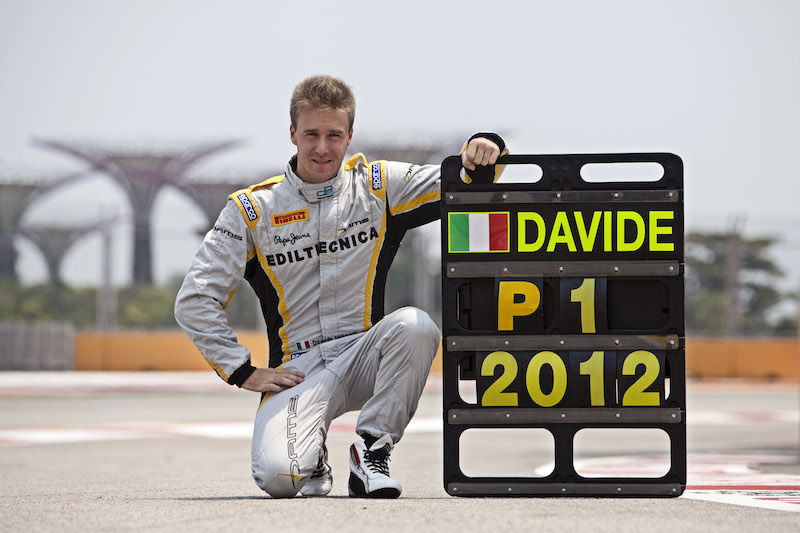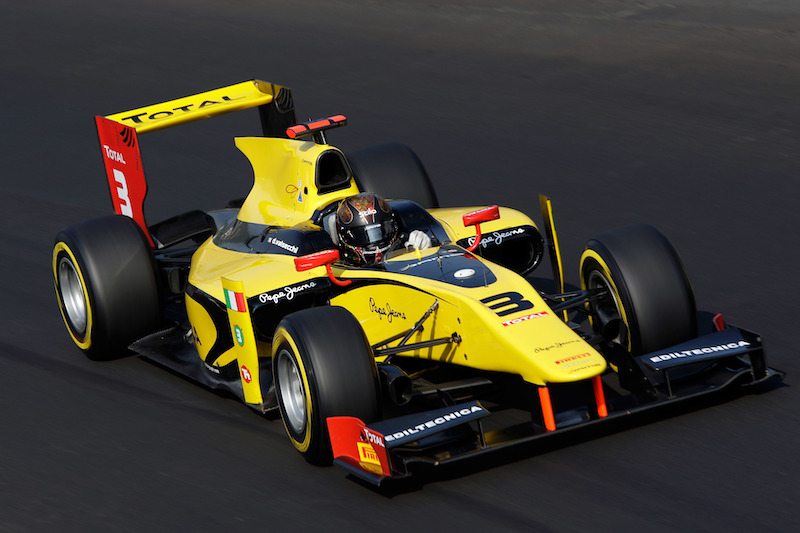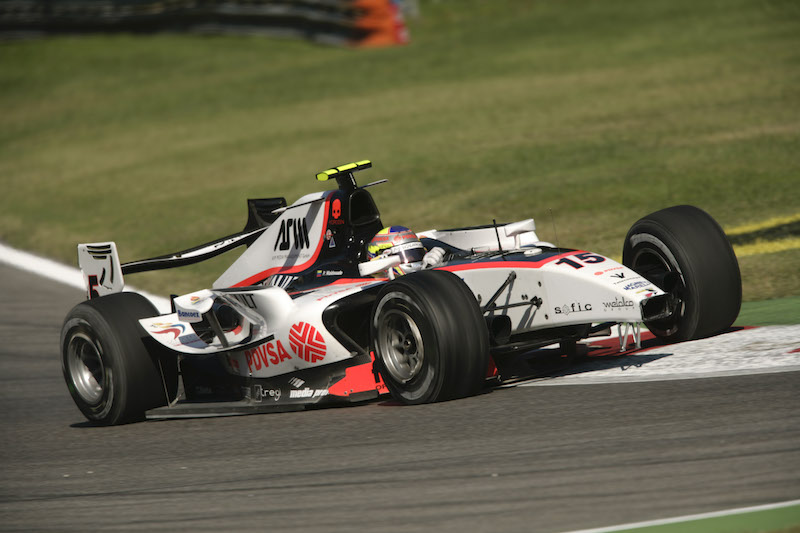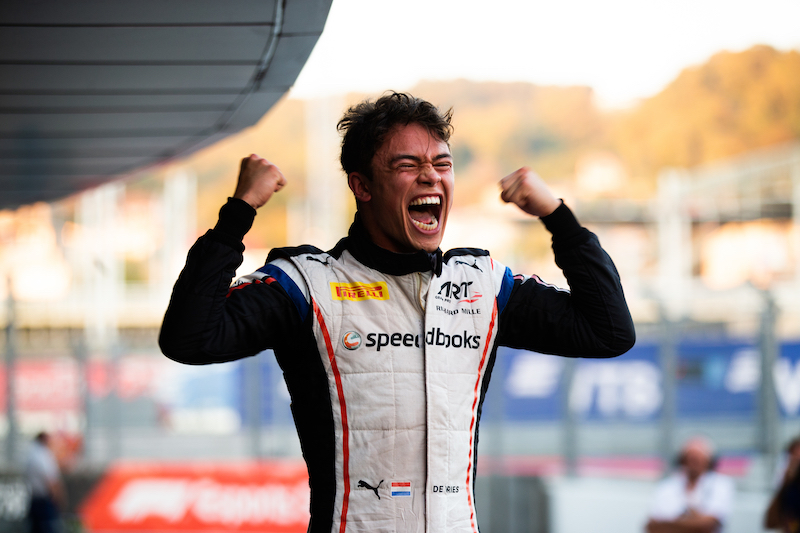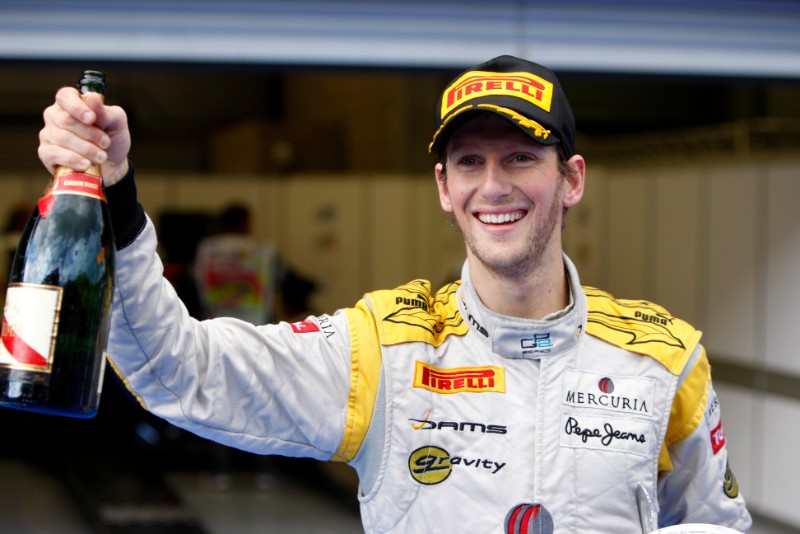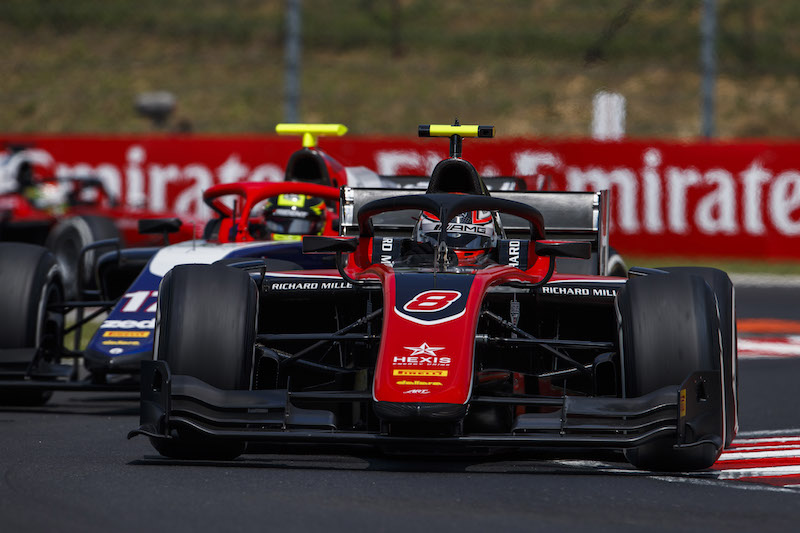
Photos: Formula Motorsport Ltd
Over the past 15 years, Formula 1’s main support series Formula 2 (previously GP2) has become the essential junior category for any driver hoping to graduate to the top class. We rate some of the champions
Red Bull aside, most F1 teams send their junior drivers to F2 to learn the nuisances of the highly-challenging Pirelli tyres and to assess how they deal with the frenetic racing.
Seven of the 10 GP2/F2 champions since 2010 have gone on to race in F1, and three of them remain in the 2020 field.
Those who have left F1 have stepped over to lead Mercedes’ Formula E venture or forged a successful career in the commentary box.
To celebrate 15 years since GP2 began, Formula Scout’s Josh Suttill ranks the previous 10 champions’ title-winning seasons, taking into account factors such as their prior experience and the strength of the field that they triumphed in.
10. Davide Valsecchi ITALY 2012 GP2 champion
Wins: 4 (2 feature, 2 sprint) Poles: 2 Fastest laps: 5 Podiums: 10 Starts before title campaign: 105
Davide Valsecchi entered the 2012 GP2 season with four years in the category under his belt, and the 2009-10 Asian title.
He joined DAMS, which had taken Romain Grosjean to the 2011 title, and much was expected of the 25-year-old. His rivals were also vastly experienced, with the top four in the points at the end of the year having 21 full seasons between them.
Arden’s Luiz Razia proved to be Valsecchi’s main competition, winning the first race at Sepang. Valsecchi hit back in style against his 2011 team-mate with a stunning double win in Bahrain, only the fifth driver at the time to achieve that in GP2.
He made it three wins in a row when the series re-visited a week later but took just one more win thereafter in the sprint race on home ground at Monza. His two pole positions had come in the first two rounds.
The Italian was simply solid rather than speculator, and did exactly what he needed to do to win the title at his fifth attempt. It’s fair to say that the GP2 field at that time was far from the quality of its rival Formula Renault 3.5’s grid.
Valsecchi’s F1 call-up never came while serving as Lotus’s reserve driver in 2013. When Kimi Raikkonen was unable to partake in the final two races, the team gave Heikki Kovalainen the nod over Valsecchi, and the Italian’s F1 dreams were finished.
Since then, he’s participated in a couple of GT races and embarked on a highly-popular career in broadcasting.
9. Fabio Leimer SWITZERLAND 2013 GP2 champion
Wins: 3 (3 feature) Poles: 1 Fastest laps: 1 Podiums: 7 Starts before title campaign: 74
The 2013 GP2 title race was only surpassed by 2016 in its unpredictability. ART Grand Prix’s James Calado was the pre-season title favourite, as the highest-returning driver from the 2012 season, but endured a sluggish start to the season.
Much was also expected of Marcus Ericsson who took over from champions Grosjean and Valsecchi at DAMS, but he managed just nine points (only one of them was scored in a race) during the first five rounds.
This cleared the way for Rapax’s Stefano Coletti to take an early points lead with six podiums – including three wins – in the first eight races. He took one further podium at the sixth round at Silverstone, then inexplicably failed to score again.
All of this meant Racing Engineering’s Fabio Leimer was suddenly in pole position for the title. He’d won back-to-back feature races at the start of the season in Malaysia and Bahrain, but then crashed in each of the following two feature races.
Leimer recovered well from this misfortune to fire in a consistently solid remainder of the season. He won once more at Monza, but his eventual title rival Sam Bird of new team Russian Timer enjoyed much greater peaks.
Bird picked up five race wins to Leimer’s three. Leimer also took just one pole all year, the joint-second fewest of any GP2 champion. His points tally was representative of 38% of the maximum points available, the lowest of any GP2 champion.
The difference proved to be the better consistency of Leimer and his team, which had won the 2008 title with Giorgio Pantano.
A much anticipated season finale proved to be anticlimactic as Leimer took a third and fourth to take the title, while Bird stalled from second place on the grid in the feature race.
Leimer deserves great credit for his consistency and title management but owed a lot to his faltering rivals. Although perhaps not fast enough for F1, he’s deserved more than the limited post-GP2 chances he’s had at top-level motorsport.
8. Jolyon Palmer ENGLAND 2014 GP2 champion
Wins: 4 (2 feature, 2 sprint) Poles: 3 Fastest laps: 7 Podiums: 12 Starts before title campaign: 68
After impressing in his family-run feeder series, Jolyon Palmer made the switch to GP2 in 2011. He ended up 28th in the drivers’ championship with zero points.
His rate of development thereafter was steadily impressive. He rose to a respectable 11th in his second year, with iSport, and took his maiden win. In 2014 he faced off off against Felipe Nasr at Carlin, and came up short. Nasr was an outside title challenger and ended up fourth – Palmer could only manage seventh place.
A switch to DAMS paid dividends in 2014 for Palmer. The French outfit’s drivers’ streak ended after a topsy-turvy ’13 season for Marcus Ericsson, but Palmer helped get the team back on track.
Series rookie Stoffel Vandoorne upstaged the entire field in the Bahrain season opener, but fortunately for Palmer, this proved to be an infrequent occurrence for Vandoorne in the first half of the year.
Palmer hit back with a two second place finishes at Barcelona and won the Monaco feature race from pole. This fifth podium in a row established Palmer as the driver to beat, with his old team-mate Nasr providing the main competition having broken his GP2 win duck at the 50th time of asking in Barcelona.
Nasr and Palmer were evenly matched during the year’s first half, and Palmer’s early podium run earned him a sizeable lead.
Palmer stamped his authority on the championship with two robust moves on Nasr at the Hungaroring. The Briton, who served as Force India’s test driver at the time, had developed a reputation over his years in GP2 as one of the toughest racers.
His robustness had quashed any hopes Nasr had of a title comeback, and it was Vandoorne who was the strongest driver in the second half of the season, but out of the title picture due to his earlier inconsistencies.
Palmer made very few mistakes during 2014, only missing out on the points in two of the 22 races. He proved the more complete package compared to the perhaps more highly-fancied Nasr and highly-rated Vandoorne. He owed a lot to his experience, but his supreme racecraft and management of the Pirelli rubber made him a deserving champion of a strong field.
7. Pastor Maldonado VENEZUELA 2010 GP2 champion
Wins: 6 (6 feature) Poles: 0 Fastest laps: 5 Podiums: 8 Starts before title campaign: 57
Pastor Maldonado’s 2010 GP2 title-winning campaign was the perfect microcosm of his time in F1. On the one hand, he was supremely quick, winning six back-to-back feature races, something no driver in the series has ever achieved. While on the other hand, he was sloppy and erratic and slumped once the title was in his grasp.
His competition completely fell apart. Addax’s leading man Sergio Perez was his closest rival but suffered a myriad of bad luck; pitstop problems and an engine failure at Barcelona, and disqualification out of fourth place in the Istanbul feature race due to a technical infringement. He was the helpless victim of a crash with Valsecchi in Valencia after starting from pole.
The title-clinching weekend summarised the messiness of the 2010 title fight. In the sprint race, Maldonado made his third trip into the barriers of the weekend just moments after Perez had run through the gravel at the Parabolica. The duo had both crashed out of the feature race the day before. Maldonado was crowned champion while watching in the pits, as Perez struggled to 13th place in the sprint race.
With the title sewn up, Rapax’s Maldonado was barely present during the final round at Abu Dhabi and failed to score.
His race speed during this campaign was never in doubt. At Silverstone, he delivered a stunning demolition of the field in the feature race, leaving poleman Jules Bianchi far behind. His record of six straight feature race wins is unlikely to be beaten anytime soon.
However, he failed to score a single pole position all year and was perhaps the best driver at avoiding the chaos rather than the fastest driver in the 2010 GP2 field.
Regardless he graduated to F1 the following year with Williams and took their last grand prix win in 2012 before switching to Lotus for 2014-15.
6. Nyck de Vries NETHERLANDS 2019 F2 champion
Wins: 4 (3 feature, 1 sprint) Poles: 5 Fastest laps: 3 Podiums: 12 Starts before title campaign: 45
The most recent F2 champion takes the number six spot on this list but easily had the most mediocre start to his title-winning campaign of any driver on this list. Despite having three years of experience on Pirelli rubber, pre-season title favourite de Vries stumbled to a sixth and a seventh-place finish in Bahrain.
One round later de Vries was upstaged by Jack Aitken in a frenetic Baku feature race, and it took him until the Barcelona sprint race to record his first win of the year.
Thereafter, de Vries was unstoppable, taking back-to-back feature race victories at Monaco and Paul Ricard. He added eight further podiums including a win in the Sochi feature race to clinch the title one round early. Similar to Maldonado at the start of the decade, de Vries failed to score a point in the final weekend in Abu Dhabi with the title wrapped up.
De Vries’ competition was far from the most competitive on this list, and he seemed to be playing the numbers game at times, rather than the all-or-nothing approach that had characterised his less successful but more spectacular 2018 season with Prema.
Heroics were not required for de Vries in 2019, whodelivered the title he needed to earn a Mercedes seat in Formula E at the end of the year.
5. Pierre Gasly FRANCE 2016 GP2 champion
Wins: 4 (4 feature) Poles: 5 Fastest laps: 4 Podiums: 9 Starts before title campaign: 27
Straightforward is not a word you would ever use to describe Pierre Gasly’s 2016 title-winning year. His rookie season in 2015 with DAMS was rocky, with a multitude of collisions and bad luck piling the pressure on for 2016, this time with the debuting junior single-seater powerhouse Prema.
He’d shown plenty of speed alongside Williams F1 junior Alex Lynn in 2015 but needed to prove he could put together a title campaign against a strong field to secure F1 promotion. Amongst the strong field was his Prema team-mate Antonio Giovinazzi, a rookie in GP2 but with three years of European Formula 3 experience.
Giovinazzi, after numerous different points leaders, would form Gasly’s main title competitor. But in truth, Gasly’s biggest obstacle was himself.
He went into the 2016 season with a winless streak stretching back to his title-winning Formula Renault 2.0 season in 2013. Gasly should have ended the streak at the very first race, but he burnt out his hard tyres and fell from pole to third place.
In Monaco he crashed multiple times, and was upstaged by Giovinazzi’s a stunning weekend in Baku where the Italian won twice. At the Red Bull Ring, Gasly spun out of a likely win in the wet and it began to feel like he wouldn’t win again.
Fortunately for the Red Bull junior, he was able to make that Austrian round the low-point in his season, as he finally got the win he so desperately deserved at Silverstone and then was able to build-up the title momentum (although not without further misfortunate).
The intra-team title fight climaxed with the most convincing display from Gasly in the season finale in Abu Dhabi. He took his fifth pole of the season by over three-tenths and dominated the feature race to make his job on Sunday much easier. He stumbled to ninth in the sprint race but Giovinazzi was also relatively uncompetitive meaning the title was Gasly’s.
It’s easily the most dramatic title victory on this list, and while it was highly entertaining to watch with its many twists and turns, it left questions marks for Red Bull. This was especially the case given Prema’s strong entry into the series and Gasly’s one-and-a-half years of GP2 experience. Retrospectively, it pails in comparison to his successor at the team.
Rather than an F1 promotion for 2017, Gasly was sent to Japan’s Super Formula to iron out those remaining rough edges ahead of his full F1 debut, which unexpectedly came later that year. The hallmarks of his mixed F1 career thus far can be firmly seen in his GP2 title year.
4. Romain Grosjean FRANCE 2011 GP2 champion
Wins: 5 (3 feature, 2 sprint) Poles: 1 Fastest laps: 6 Podiums: 10 Starts before title campaign: 54
A new car and tyre supplier meant Romain Grosjean’s prior GP2 experience was no guarantee of success in 2011. He’d made a strong series debut in 2008, finishing fourth with ART Grand Prix in the main series as well as winning the GP2 Asia Series prior to the start of the main season.
A switch to Addax for 2009 may have delivered him the title had he not stepped up to F1 with Renault for a fruitless half-season. Grosjean regrouped in 2010, winning the Auto GP title, and DAMS called upon him to make his GP2 return mid-season to boost the French outfit’s form.
DAMS handed Grosjean a full-time drive for 2011, and the Frenchman immediately vindicated that decision by taking his second GP2 Asia title and winning the main series season opener at Istanbul from pole. He claimed a podium in all of the remaining rounds bar Barcelona, where he lost fourth in the feature race to a technical infringement. Considering he rose from last to ninth place in the sprint, it’s safe to assume he would have been in the hunt for a top three finish on Sunday.
The field was hardly the strongest of the decade but still contained a handful of future stars. GP2 veteran Luca Filippi reaped the rewards of a mid-season switch to Scuderia Coloni to win in three of the last four rounds to claim title runner-up spot.
Addax duo Charles Pic and Giedo van der Garde demonstrated Grosjean-beating pace, but neither developed a season-long challenge. Meanwhile Jules Bianchi’s second year in GP2 failed to improve on the first, and he switched to FR3.5 for 2012.
Grosjean’s Barcelona weekend proved to be a minor blip in an otherwise imperious season. One pole was all he needed to wrack up five wins, three of them in feature races, and 10 podiums. He was crowned with three races to go and earned a well-deserved second chance in F1.
3. George Russell ENGLAND 2018 F2 champion
Wins: 7 (4 feature, 3 sprint) Poles: 8 Fastest laps: 6 Podiums: 11 Starts before title campaign: 0
2018 marked the first proper year of F2, with a brand-new car, lots of F1 juniors and much-deserved increased media coverage.
Unfortunately, that brand new car brought lottery-like unreliability; it was commonplace for the early races to be littered with stalled cars and the aborted race starts. This could have nullified the praise on the eventual winner of a series blighted by technical issues, but fortunately, nobody could argue that George Russell wasn’t a worthy winner of the 2018 crown.
He had an incredibly hard task in following Charles Leclerc’s supreme 2017 F2 season, but somehow Russell brought himself firmly into the conversation for the greatest title campaign in the series’ history. He took seven wins, and it could have been more without an over-ambitious de Vries at Baku, engine woes in Monaco, sensor issues at Paul Ricard, pitstop problems at Silverstone or clutch failure at the Hungaroring.
His qualifying record was just as impressive with seven front-row starts, five of which were poles, against one of the most competitive second-tier fields in some time. Russell’s consistency also went unmatched, even when struck by reliability woes.
Russell wasn’t just playing the numbers game though, taking an extraordinary win from 12th on the grid in a frenetic Baku sprint race and rarely shying away from a wheel-to-wheel duel.
After two disappointing failed title challenges with Sergey Sirotkin and Alexander Albon, Russell firmly played his part in helped ART to become the dominant force in the series again. He also became the first driver to win the GP2/F2 and GP3 championships with the same team.
ART’s advantage in adapting to the new car was evident with Russell’s and de Vries’ dominant titles, and Russell deserved the opportunity to be in the leading team after battled against the dominant Prema during his time in European Formula 3.
The strength of the ’18 F2 field has been proven, with four of its drivers lining up on the F1 2020 grid, and others securing drives in FE and IndyCar.
2: Stoffel Vandoorne BELGIUM 2015 GP2 champion
Wins: 7 (7 feature) Poles: 4 Fastest laps: 7 Podiums: 16 Starts before title campaign: 22
Stoffel Vandoorne began the 2015 GP2 season as title favourite, and he ended it having completed his mission of domination.
McLaren had asked its junior to win the title in style, following his strong debut season with ART in 2014. Were it not for a mid-season slump following victory on his debut, he could have been champion as a rookie.
Vandoorne silenced any doubters of his ability with a scintillating start to the 2015 season. He took four successive feature race victories, starting with an overtaking masterclass at Bahrain and ending with a dominant victory at the Red Bull Ring.
He finally had a ‘bad’ weekend at Silverstone, taking third place in the feature race and faltering to ninth in the sprint with a misfiring engine. Another mediocre weekend – by his lofty standards – at the Hungaroring (a fifth and a second place) did little to reduce his sizeable points lead.
Another feature race win came at his home track Spa-Francorchamps, and again at Bahrain and Abu Dhabi at the end of the year. Seven feature race wins in a season is yet to be matched. Not that he was struggling in the sprint races.
Although he didn’t win one, he was on the podium six times and that’s quite an achievement considering he started most of those from eighth on the grid.
Vandoorne’s rivals included current IndyCar star Alexander Rossi and future F1 drivers Sergey Sirotkin, Gasly and Rio Haryanto.
The DAMS duo of Gasly and Alex Lynn had the potential to be the biggest threat to Vandoorne, but their rookie status was evident with a string of mistakes and poor strategy calls. Rossi was able to use his supreme racecraft to nullify his one-lap speed shortcomings.
The Monza feature race was the greatest case study in this. Gasly was on course for his maiden victory before a pitstop error ended his hopes. Lynn then ended his own chances at Turn 1 a few laps later, misjudging his braking and collecting the innocent Sirotkin.
This would have left Vandoorne clear for the lead had Rossi not out-foxed the Belgian on slightly-fresher rubber, one of the rare Saturdays where Vandoorne was beaten.
Whichever strategy Vandoorne opted for, he seemed to always end up at the front such was his speed and ability to manage the Pirelli rubber. While he didn’t win the series as a rookie as Russell did, Vandoorne also didn’t benefit from a year on Pirelli rubber in GP3, and yet he adapted brilliantly from his very first GP2 race in 2014.
It came as a great shock to anybody who witnessed his superlative GP2 title campaign that McLaren didn’t promote him to a race seat for 2016. He got a one-off outing in Bahrain, outqualifying Jenson Button and scoring a point. He finally got the full-time nod for 2017 but struggled in his two years alongside Fernando Alonso and was dropped at the end of 2018.
Fortunately, Mercedes picked up Vandoorne for its venture into FE last year, after he shone in the series with HWA Racelab.
1. Charles Leclerc MONACO 2017 F2 champion
Wins: 7 (5 feature, 2 sprint) Poles: 8 Fastest laps: 4 Podiums: 10 Starts before title campaign: 0
Leclerc had three years of car racing behind him before F2, which he entered as reigning GP3 champion. It was unsurprising that Prema looked to someone of his quality to fill the void left by Gasly and Giovinazzi. However, Leclerc proved to be far suprerior to either driver, combing the raw speed of Gasly with the best elements of Giovinazzi’s racecraft.
His qualifying form was simply incredible. He effectively took eight consecutive pole positions at the start of the year – only disqualification for a technical infringement in Hungary prevented this record standing.
He may have been humbled by the more-experienced Artem Markelov in his first race in Bahrain, but he executed an unconventional one-stop strategy in the sprint race to rise from 14th to first place in just eight laps. He followed this up with a Barcelona feature race win despite limited radio communications and he would have secured a double-win at Baku had it not been for a penalty for failing to slow for yellow flags.
That Baku weekend was among the high points of his on-track performances in 2017 considering it coincided with his lowest off-track moment of the year – the death of his father. The professional attitude and the ability to still pull out a stunning pole lap and two brilliant race drives confirmed his future star status.
His home weekend at Monaco was one of only two weekends, along with Monza, where the reason for Leclerc not winning was self-inflicted. He had his fair share of bad luck despite what his eventual points advantage might suggest.
Victory at Spa was stripped from him and an oil-spluttering engine at Silverstone threatened a potentially dominant win. However, this apparent engine issue wasn’t enough to startle Leclerc as he carried on to win the race by over eight seconds.
Another one of his star drives came after that disqualification from pole in Hungary put him to the back of the grid. On Saturday, he carved through the field at a track not known for its overtaking opportunities to take fourth place.
The title was wrapped up early after he defeated current Nissan e.dams FE driver Oliver Rowland in a tense feature race at Jerez. If the aforementioned bad luck hadn’t struck, it’s likely rookie Leclerc would have taken the title even earlier.
Considering Vandoorne’s domination of the 2015 field, and Russell’s impressive rise to the top of a stacked 2018 grid, it’s a testament to Leclerc’s supreme 2017 season that he is number one on this list. After all, you can only beat the competition in front of you, and Leclerc not only beat but demolished his in such a way that he acts as a benchmark for future champions.
His subsequent meteoric rise from Sauber in 2018 to Ferrari’s current leading driver comes as little surprise to anybody who saw his sublime 2017 season.
